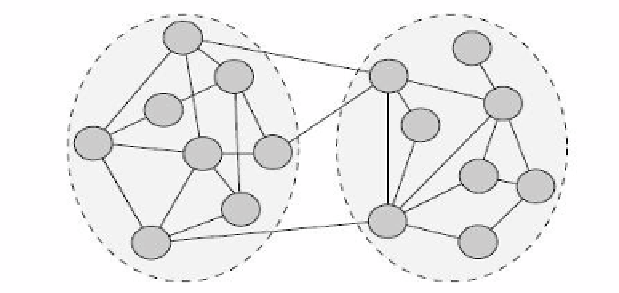Information Technology Reference
In-Depth Information
Fig. 3.
Communities (Highly interconnected regions) within a network
Thus, we are ready to introduce our minimal architecture for collective intelligen-
ces, which defines structures given by just two layers, as illustrated in Figure 4:
- an “object” level with network of nodes that cluster into communities content and
information;
- a “meta-level” where content and information is abstracted into ontologies and ab-
straction can be viewed also in terms of the symmetric relationship of classifica-
tion/categorization, with concepts classifying the content they are abstractions of.
3 A Cognitive Prosthesis for Concept Discovery
The fundamental function that our cognitive prosthesis must supply is supporting
abstraction into ideas. In other words, it must support concept discovery. Thus, our
cognitive prosthesis will act as a hardwired “knowledge spiral” that supervises the
interaction between the two layers in the minimal architecture of collective intelligen-
ces and makes possible to up-raise the process of information creation at the object
level into a process of knowledge creation at the meta-level through the introduction
of emergent concepts into existing ontologies. Intuitively, the process that we apply is
an interleaving of content-based classification together with graph-based detection of
communities, where we assume that the existing nodes in the ontology classify corre-
sponding community regions
−
if the graph covered by the classification is part of still un-covered adjacent
community graphs then we add corresponding nodes to the ontology, thus
putting in action the learning capability to abstract from the new content
which has just been acquired;
−
we then proceed to classify again on the basis of the extended ontology.
Obviously, we also assume that the topology of the community structures is dynamic,
and thus subject to continuous reconfiguration, since the participants in the collective

